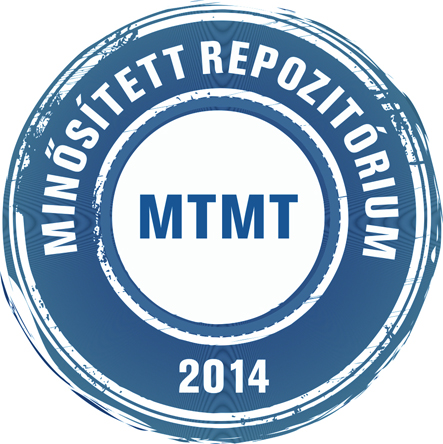Nefnouf Ahmed Seif Eddine
Shadism and Female Resistance in Toni Morrison's Novels.
Doktori értekezés, Szegedi Tudományegyetem (2000-).
(2022)
|
PDF
(disszertáció)
Download (1MB) |
|
|
PDF
(tézisfüzet)
Download (510kB) |
|
|
PDF
(címlap)
Download (192kB) |
Magyar nyelvű absztrakt
A jelen disszertáció az afroamerikaiak mint rassz irodalmi reprezentációjához nyújt új adalékot. A világhírű afroamerikai regényíró, Toni Morrison négy regényében –Paradise, Beloved, A Mercy, The Bluest Eye– vizsgálja a rasszon belüli és kívüli interakciók irodalmi reprezentációját, azokokait, illetve pozitív és negatív következményeit. Disszertációmban feltérképezem a shadizmus, azaz a rasszon belüli, bőrszínhez kapcsolható, identitás-alapú megkülönböztetés, valamint a nők ez ellen irányuló ellenállásának művekben kimutatható reprezentációját. Az elemzésben rámutatok arra, hogy a rabszolgaság traumája, valamint a fehérbőrű amerikaiak által élvezett kiváltságos helyzet gyűlöletet keltett az afroamerikaiakkörében, ami erősítette a shadizmus jelenségét. Morrison Paradisec. művében felvetődik az az elképzelés, hogy a fekete közösség többsége megtagadjaa világosabb bőrű feketéktől azt a lehetőséget, hogy megőrizzék integritásukat és saját hazát teremtsenek. A Beloved c. műben olyan eseteket találunk, amikor a szereplők megölik gyermekeiket, hogy megmentsék őket a rabszolgaságtól. Az ez által okozott traumák feldolgozása kapcsán ugyanakkor Morrison arra mutat rá, hogy a shadizmus tettei hozzájárulnak a gyógyuláshoz, mivel a szereplőknek egyénileg és kollektíven kell szembenézniük múltjukkal a traumatikus és narratív emlékezet, megtestesült emlékezet és kulturális emlékezet során. Továbbá, a szolidaritás és a testvéri kapcsolat az elnyomás leküzdésének és megelőzésének eszközeként fogható fel, ahogyan ezek A Mercy című regénybenműködnek: segítségükkel a nők eredményesen tudnak fellépni a származáshoz, a társadalmi helyzethez és a hithez kötődő különbségek ellen. A The Bluest Eye c. regénnyel összefüggésben pedig bemutatom, hogy a shadizmus nemcsak a rasszhoz kapcsolódik, hanem azzal a móddal is, ahogyan azt egy vagy több konstruált identitás befolyásolja az interszekcionalitás lencséjén keresztül; ez többnyire akkor fordult elő, amikor egy szereplő utánozni próbál, vagy megpróbál fajilag fehérnek mutatkozni.. Kulcsszavak: Shadizmus, Női Ellenállás, Testvériség, Rasszizmus, Szolidaritás, Trauma, Interszekcionalitás
Absztrakt (kivonat) idegen nyelven
The experiences of African Americans provide an understanding of issues such as racism, shadism, gender, class, and discrimination. This study provides new insight on shadism and the resistance of female by focusing on the positive and negative outcomes and their causes in four novels by the esteemed African American novelist Toni Morrison. These novels are Paradise, Beloved, A Mercy, and The Bluest Eye. The study analyzes these novels with the ultimate aim of examining concepts of shadism and female's resistance within the African American community. The analysis indicates that slavery had a profound effect on the way that African Americans related to each other. In particular, the preferences provided to light-skinned Americans created hatred between African Americans which led to the rise of shadism. This is manifested in Toni Morrison Paradise, where the concept of disallowing light-skinned blacks the opportunity to maintain the purity of their race and create an indigenous place is raised. Further, it was found that shadism created substantial trauma for African Americans, which manifested differently in the novels. In Beloved, there are instances where characters kill their children as a way of saving them from the evils of slavery and it is revealed that the acts of shadism contribute to healing as the characters have to confront their past individually and collectively throughout traumatic and narrative memory, embodied memory, and cultural memory. Further, solidarity and sisterhood can be viewed as a way of overcoming and preventing oppression like the women in A Mercy reveal, despite differences in origin, background, and belief. Also, in The Bluest Eye, the study demonstrates that shadism is not only related to race, but to the manner in which one or more constructed identities influence it through the lens of intersectionality; this happened mostly when a character tries to mimic or try to pass racially to white. Significantly, the study finds that the issue of whiteness and American identity are tools utilized to amplify discrimination against African Americans. Thus, shadism adopts the same ideological position as racism and increases inequalities in the African American community. Dealing with the issue of shadism requires focusing on changing people’s beliefs about race, whiteness, American identity, and class. Thus, changing misconceptions about race will play an important role in creating better, and more tolerant, communities.
| Mű típusa: | Disszertáció (Doktori értekezés) |
|---|---|
| Publikációban használt név: | Nefnouf Ahmed Seif Eddine |
| Magyar cím: | Shadizmus és női ellenállás Toni Morrison regényeiben |
| Témavezető(k): | Témavezető neve Beosztás, tudományos fokozat, intézmény MTMT szerző azonosító Vajda Zoltán PhD, Dr. habilitált, Amerikanisztika Tanszék SZTE / BTK / AAI 10019849 |
| Szakterület: | 06. Bölcsészettudományok |
| Doktori iskola: | Irodalom- és Kultúratudományi Doktori Iskola |
| Tudományterület / tudományág: | Bölcsészettudományok > Irodalom- és kultúratudományok |
| Nyelv: | angol |
| Védés dátuma: | 2022. július 26. |
| Kulcsszavak: | Shadism, Female Resistance, Sisterhood, Racism, Solidarity, Trauma, Intersectionality |
| EPrint azonosító (ID): | 11302 |
| A mű MTMT azonosítója: | 34119642 |
| doi: | https://doi.org/10.14232/phd.11302 |
| A feltöltés ideje: | 2022. máj. 11. 08:31 |
| Utolsó módosítás: | 2023. aug. 30. 15:07 |
| Raktári szám: | B 7094 |
| URI: | https://doktori.bibl.u-szeged.hu/id/eprint/11302 |
| Védés állapota: | védett |
Actions (login required)
 |
Tétel nézet |

 Repozitórium letöltési statisztika
Repozitórium letöltési statisztika Repozitórium letöltési statisztika
Repozitórium letöltési statisztika






